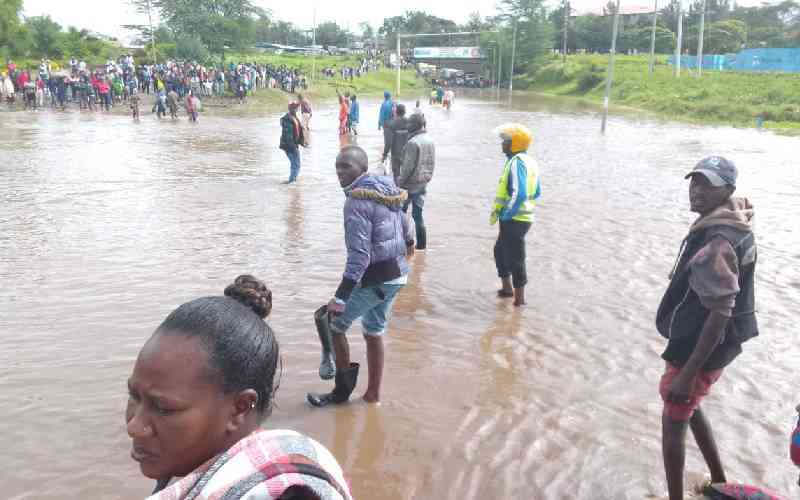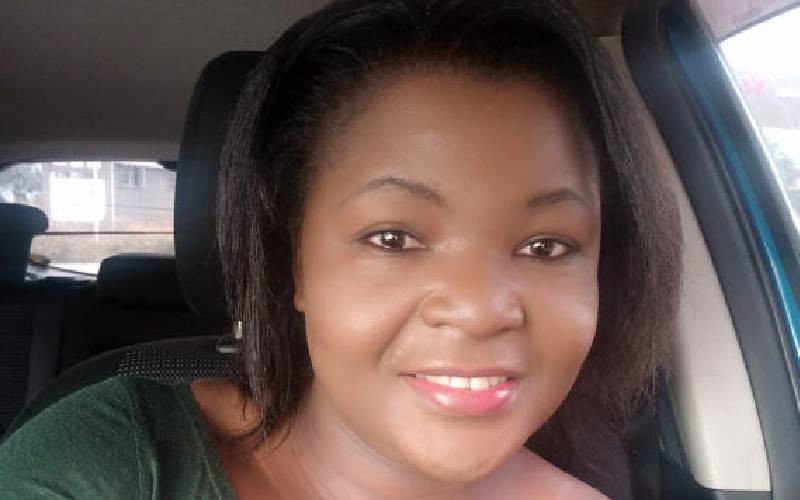
Growing risks this year may lift the veil on banks’ inexhaustible sources of growth, exposing them to the pain being experienced across the economy.
While the rest of the economy has been struggling, banks have miraculously been squeezing out double-digit growth even when lending to the private sector has barely increased.
Private sector credit grew at a snail’s pace of 3.2 per cent last year, the lowest over the last 10 years.
This was an indication of how bad the economy was, with nine firms - Unga Group, Crown Paints, UAP, Britam, Sameer Africa, Kenya Power, Bamburi Cement, Mumias Sugar, and Sanlam - giving profit warnings.
The last time banks lent so little to the economy was in 2008 - at a growth rate of 0.2 per cent - following the 2007 post-election crisis. However, the banks as per the current results so far seem unscathed.
Stanbic Bank has posted a 45.5 per cent jump in net profit to Sh6.27 billion while KCB Group made a Sh24 billion net profit last year, a 21.8 per cent jump.
Barclays Bank profits, on the other hand, almost hit a decade high of Sh7.4 billion, a seven per cent profit lift-off from Sh6.9 billion last year.
Barclays Bank boss Jeremy Awori said the lenders were under pressure to perform given the fluidity of investments that may see money migrate to other competing sectors of the economy if they do not deliver.
“If banks are not giving returns, the money will simply go elsewhere,” said Mr Awori yesterday during the release of the lender’s results.
For the seemingly invincible banks, the profits have mainly come from balance sheet reorganisations around costs where thousands of staff were sent home on early retirement.
Cost-saving also came from getting cheaper funds which meant squeezing pension and insurance funds for cheaper deposits and punishing small savers with little or no interest.
Having reduced private sector credit, the bank’s main source of income has been lending to the Government which has had to rely on domestic debt to plug its messy deficit. This is as taxes fall behind on a struggling economy.
“The National Treasury receipt estimates suggest that it is falling below both tax and non-tax revenue and this scenario leads to an upwards revision of domestic borrowing and loans - foreign government and international organizations to meet the funding gap,” said Renaldo D’souza, research analyst at Sterling Capital
But the laws of demand and supply mean that with all banks piling bills at the feet of the National Treasury, rates on Treasury bills and bonds are not growing, creating a big problem for banks in 2019 - flat growth.
Stay informed. Subscribe to our newsletter
The country’s biggest lender by assets, Kenya Commercial Bank, at Sh714.3 billion, had flat growth in net interest income which increased from Sh48.4 billion to Sh48.8 billion. Non-funded income was also flat at Sh23 billion.
“This year we have delivered the numbers, but they have not been delivered from the right sources,” said Lawrence Kimathi, KCB Group chief finance officer. Barclays’ interest income grew by óne per cent from Sh21.8 billion to Sh21.9 billion.
“We are facing challenges in interest income revenues which has been the reserves of what banks actually do. In many instances, we are seeing low single-digit growth,” said Mr Awori.
This year will prove a crucial marker for banks looking for pockets of growth to maximise business in a rather narrow market.
Genghis Capital researchers say their stock picks would only include four lenders out of the listed 11 with KCB, Equity Bank making the two local lenders along with the strong balance sheets of Barclays, StanChart and Stanbic which continue to pay huge dividends under the tough business environment.
“We take note of KCB’s improvement in assets quality despite significant loan book expansion in an era of rate caps. Equity Bank, on the other hand, continues to impress us with its above average non-funded income to total income performance, displaying enviable revenue diversification,” said Genghis Capital in the 2019 Playbook.
The IFRS boost
However, lenders’ toughest test will stem from an accounting rule that allowed them to keep more profits even with bad loans rising. Genghis Capital said provisions on bad loans generally declined across the sector in 2018 with banks able to write them off through capital reserves, a one-off adjustment during the transition from IAS 39.
“Stanbic Bank profit before impairments jumped a healthy 32.1 per cent year on year – a key metric since day one IFRS 9 adjustments have distorted the underlying business performance of most lenders,” SIB said.
The moment of truth will come this year when the billions will be loaded back, slicing and dicing away earnings made. “In 2019 we expect an uptick as the base effect brought about by the day one write off will have come into effect, as such we see considerable pressure on banking sector bottom lines,” said Genghis Capital head of research Joy D’Souza.
KCB’s Mr Kimathi said the day one write-off will load more than Sh2 billion cost on KCB which had been able to cut provisioning in 2017 from Sh5.9 billion to Sh2.9 billion over the adjustment.
“It will go back to the 2017 level maybe even slightly higher because the IFRS 9 is an expected loss, not an occurring loss so an NPL might be coming down yet our provisions are going up because something has changed,” said the CFO.
“For example, for all the truck business from Mombasa, if we had given them loans last year, then this year we go to IFRS 9 and the Government says we are going to do an SGR then that means we take a full year provisioning, even when they are performing but because there is a fundamental factor that impacts their business from an IFRS 9 perspective you have got to take a provision,” he said.
Barclays Bank said they chose to increase loan loss impairment by 24 per cent from Sh3.1 billion to Sh3.8 billion to stay above regulatory minimums and avoid the reversals that will hit banks this year.
The lender said that if they did what their peers had done, their profits would actually hit 17 per cent growth.
Looking to grow, banks may only be left to consolidation in the market which is being spearheaded by the National Industrial Credit (NIC Bank) and Commercial Bank of Africa (CBA) deal that will make the combined lender, the third largest bank with an asset base of Sh444 billion.
“We believe this should pave way for increased consolidation in the sector this year. Consolidation could go a long way in solving some of the inherent risks prevalent in the banking sector,” said Genghis Capital.
The prevalent risk stems from undercapitalised small lenders who are finding it difficult to get affordable money to do business sending them deeper into losses. If big banks like KCB are struggling to get affordable money, then small lenders face a serious liquidity crunch.
“Last year the interest expense went up almost by an increase of Sh3 billion because the market was very illiquid especially between May and September banks were fighting in the market for liquidity and we were paying top dollar for that and it was a concern. This year will be better we have seen more money in terms of liquidity,” Mr Kimathi said Standard investment Bank said lenders that have consistently reported cost to income ratios above their peers are: Spire Bank (248 per cent), Jamii Bora Bank (193 per cent), Sidian Bank (109 per cent) and Consolidated Bank of Kenya(118 per cent) in 2017.
This means the lenders are spending more money than what they are making. Spire Bank has been in losses that have eaten into its core capital, forcing its new owners to cough up more money in a bid to meet statutory minimum requirements of Sh1 billion minimum core capital.
“Spire Bank’s continued bleeding of money has wiped out its core capital ratio to -15.95 per cent (-14.08 per cent adjusted for IFRS 9 impairment charge) as at 3Q18 against the statutory minimum of 10.5 per cent,” said Standard Investment Bank.
Sidian Bank has received a Sh1.2 billion boost from Danish investment firm IFU to boost its capital eroded over the last two years of loss-making.
Formerly called K-Rep, the lender’s core capital has declined from 23.1 per cent in 2016 to 13.9 per cent in the third quarter of 2018.Just last year, Sidian raised an extra Sh1.1 billion from its principal shareholder Centum which owns 73 per cent stake in the lender. “Shareholders approved a total of Sh1.5 billion rights issue and we have received Sh1.1 billion, which is the share due from our main shareholder Centum,” the lender said.
Small lenders, including Jamii Bora, Middle East Bank, and Consolidated Bank, are all said to be shopping for a strategic buyer while Prime Bank has recently secured Sh5.1 billion from AfricInvest and Catalyst Principal Partners. KCB will also consolidate Imperial Bank good books, setting itself ahead of the curve with the biggest balance sheet in the industry.
Banks are also likely to turn to mobile loans just like shylocks, squeezing the life out of the lower rungs of the society whom research shows borrow to meet daily subsistence needs, bet and refinance myriad of over 25 applications, including Mshwari, Eazzy Loan, Tala, Branch, Saida, Haraka, Zidisha, Timiza, Kopa Chapaa, and Shika Loan.
KCB, which runs the KCB M-Pesa platform, cut lending to trade by 10.9 percentage points and focused more on personal on personal loans via mobile phones which grew from 26 per cent of the portfolio to 36 per cent.
Mr Kimathi said the mobile platform will boost non-funded income by up to 25 per cent after a December 2018 upgrade.
“Our biggest problem on KCB Mpesa has been capacity we could not grow or advertise because anytime loan applications went above 50,000 the small thing would crash. That is why we have invested in a big platform which has a capacity to do 250,000 applications in a day and its flying two months of this being in we have overtaken M Shwari in terms of the number of loans and value,” he said.
“The platform is also built in a way that it would be able to take up other products, including payments, insurance and collect and do data analytics to focus products we offer to our customers.”
CBR risk
Then there is the rate capping law which has tied the rates chargeable on loans directly to the Central Bank Rate (CBR) like a Siamese twin.
The 0.5 percentage point reduction of Central Bank Rate twice last year meant lenders have to forget about Sh25 billion in interest income.
Barclays’ Mr Awori said if the trend was repeated this year, banks would no longer be in business.
“If the rates fall faster than banks are taking on risks, every time the CBR drops, revenues will take a hit,” said Mr Awori. KCB expressed concern that the tame market may tempt CBK to lower rates further which may impact business. “The governor might decide that everything is looking good in the market so drop the CBR rate again and that will have a massive impact on banks,” said Kimathi.
Opportunities
Banks may, however, draw consolation from new economic avenues, including the Green bond being fashioned for the first time this year.
The KCB CFO said the lender is “very interested in energy, especially renewable energy, solar wind power’ and is structuring deals.”–they want them very finely priced because their margins are not very big anyway because they have to sell to the national grid, the bit is once they sign a contract with the likes of Kengen and Kenya power they are paid in dollars so that comes to us fairly well for us,” he said.
 The Standard Group Plc is a
multi-media organization with investments in media platforms spanning newspaper
print operations, television, radio broadcasting, digital and online services. The
Standard Group is recognized as a leading multi-media house in Kenya with a key
influence in matters of national and international interest.
The Standard Group Plc is a
multi-media organization with investments in media platforms spanning newspaper
print operations, television, radio broadcasting, digital and online services. The
Standard Group is recognized as a leading multi-media house in Kenya with a key
influence in matters of national and international interest.
 The Standard Group Plc is a
multi-media organization with investments in media platforms spanning newspaper
print operations, television, radio broadcasting, digital and online services. The
Standard Group is recognized as a leading multi-media house in Kenya with a key
influence in matters of national and international interest.
The Standard Group Plc is a
multi-media organization with investments in media platforms spanning newspaper
print operations, television, radio broadcasting, digital and online services. The
Standard Group is recognized as a leading multi-media house in Kenya with a key
influence in matters of national and international interest.










